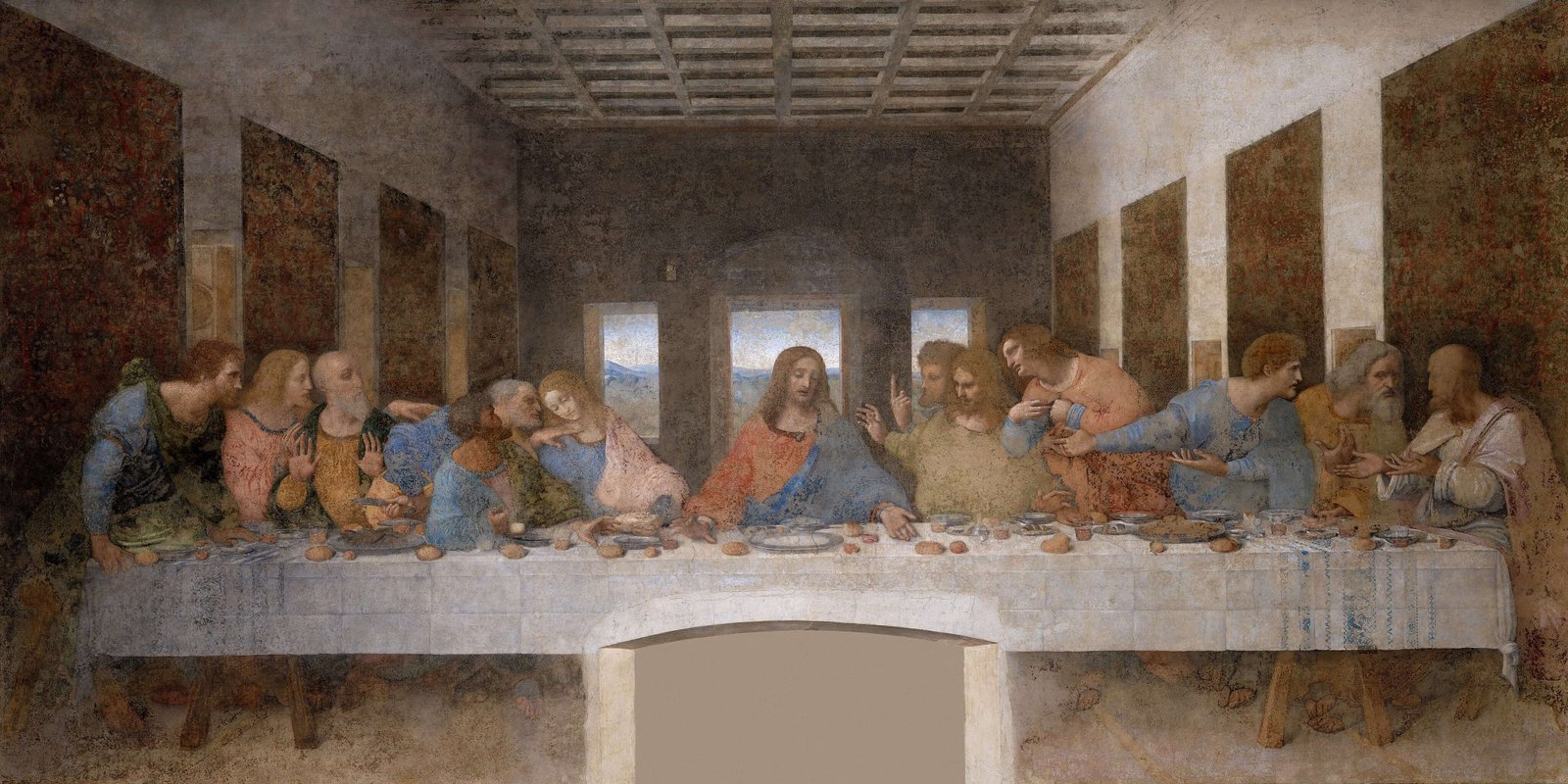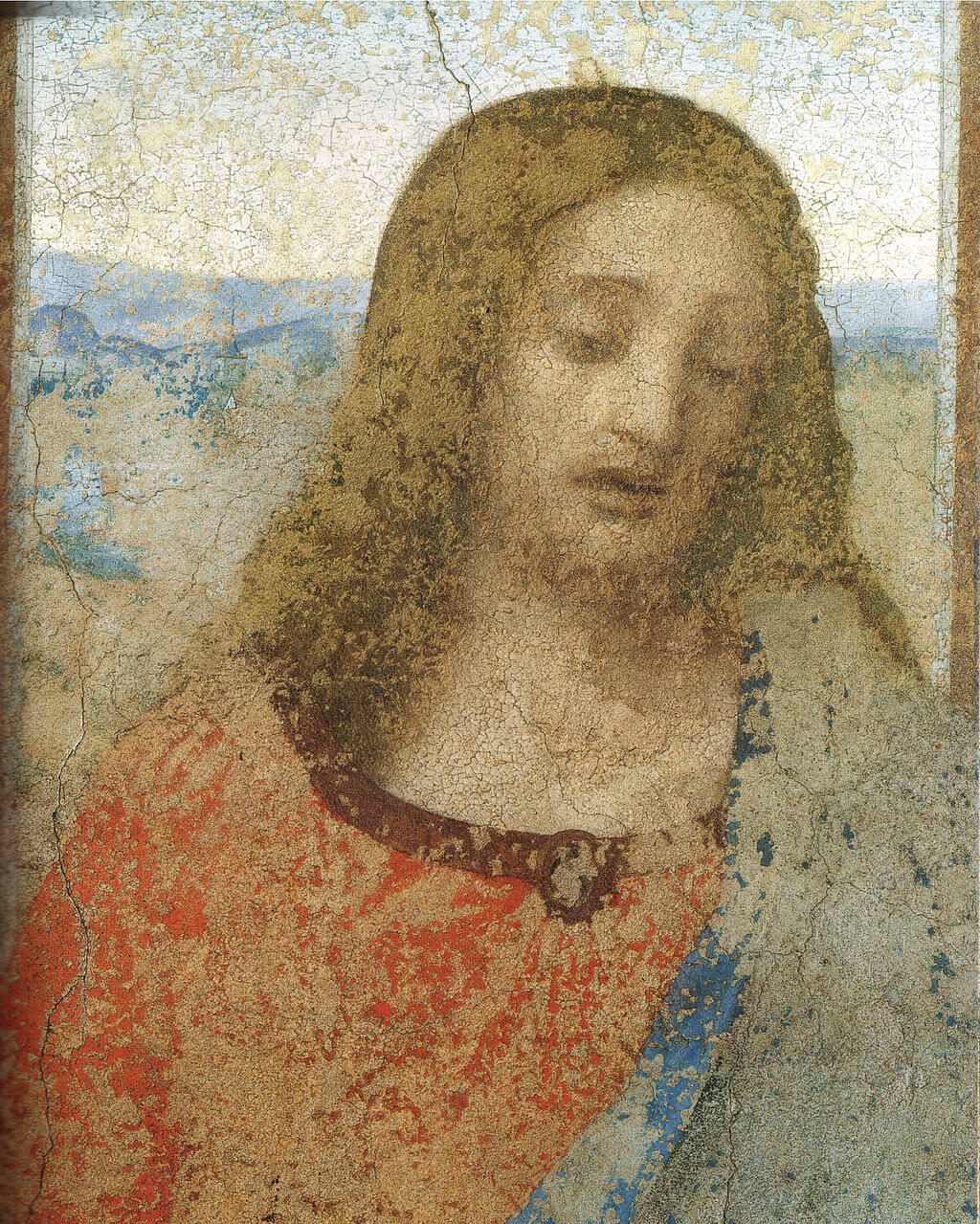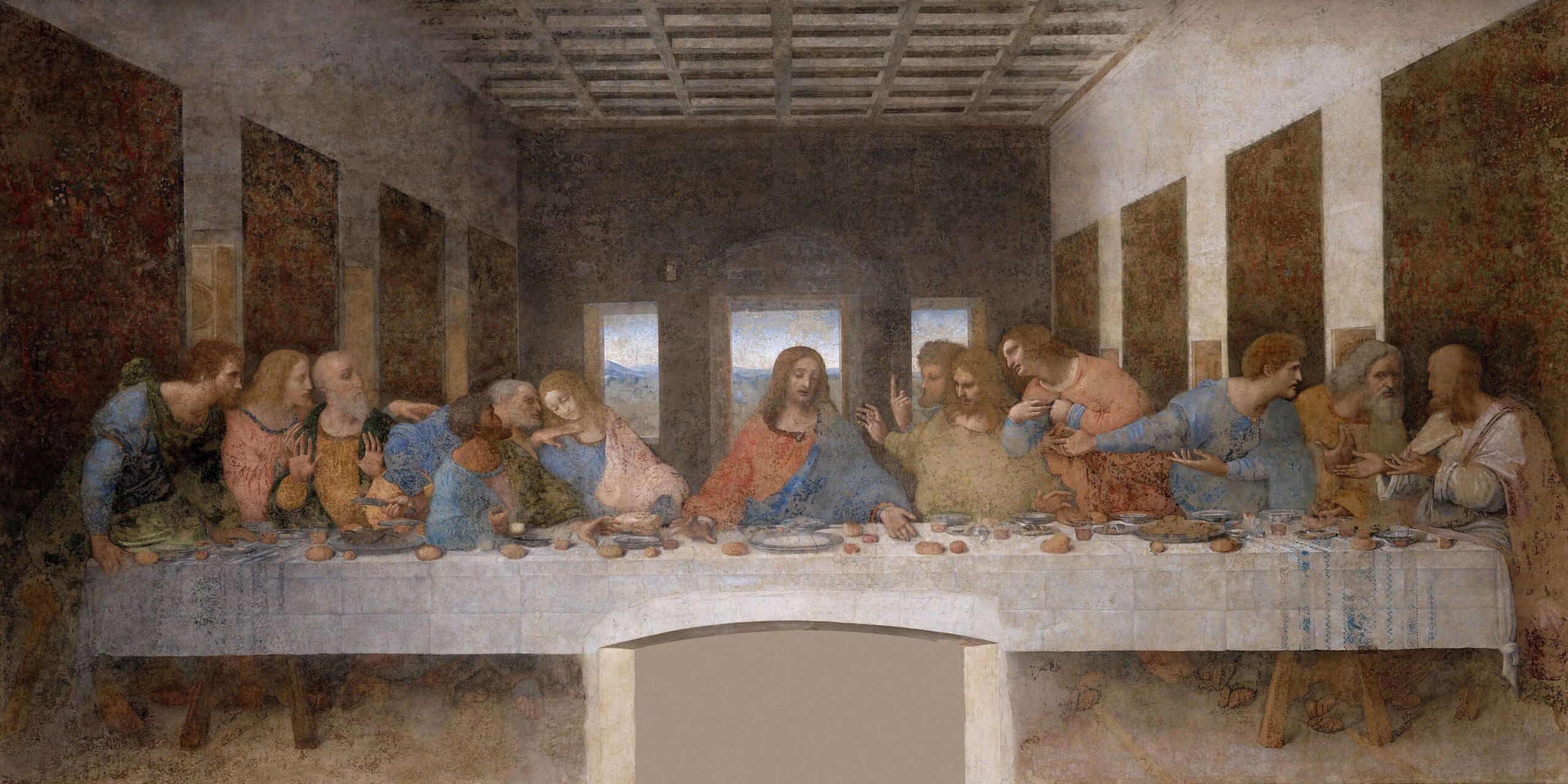When Leonardo da Vinci painted his famous The Last Supper for the Santa Maria delle Grazie monastery in Milan, he used some cool tricks to make the painting seem to be part of the room itself.

The Last Supper is on the wall of the refectory, a dining room, where the monks ate their meals. It shows people having a meal and is set in a dining room. This presented some cool opportunities. Leonardo used his knowledge of perspective, light, and optics to make it look as though the two dining rooms were one and the same. From certain, well-chosen vantage points, it looks as though the room in the painting is a seamless continuation of the real refectory, which appears to have become much longer. The lines of the walls, ceiling, and even tapestries seem to perfectly continue those of the real-life building. (Only from certain angles. The painting is much too large for these perspectival techniques to work from every possible viewing angle.) The light and shadow of the painting makes it look as though the painted scene is being illuminated through a real window in the real dining hall. To make all of this work, Leonardo had to made a bunch of adjustments to disguise the perspective errors that appeared in other places as a result of this. To be honest, the whole thing is too complicated for me to fully understand, not to mention explain. Let’s just say that Leonardo was a wizard of perspective and leave it at that.
Unfortunately, he was much less successful when it came to literally making his painting part of the room. True fresco binds pigments quite strongly to a plaster wall, making a fresco painting physically part of the wall. The experimental techniques Leonardo used on The Last Supper, however, didn’t work nearly as well. The pigments never truly bound to the wall, and they began to flake off quite quickly. This is a bit part of why the fresco is in pretty poor condition today.

My source for this fact is Leonardo da Vinci by Walter Isaacson. (New York: Simon & Schuster, 2017. p. 279-292.) Isaacson’s biography is a really thorough and informative account of one of Western history’s most interesting characters. Isaacson isn’t an art historian; he’s a biographer of geniuses, including Steve Jobs and Albert Einstein. Accordingly, he has an interesting way of looking at Leonardo’s mind that we usually don’t get from art-specific writers. And this is fitting, because Leonardo da Vinci was more than just an artist.
Update 2/25/18: You can learn more about Leonardo da Vinci’s The Last Supper, the issues surrounding its conservation, and life as a Leonardo scholar in general, in Martin Kemp’s excellent Living with Leonardo: Fifty Years of Sanity and Insanity in the Art World and Beyond. (New York: Thames & Hudson, 2018). I just finished it and strongly recommend it to others.


